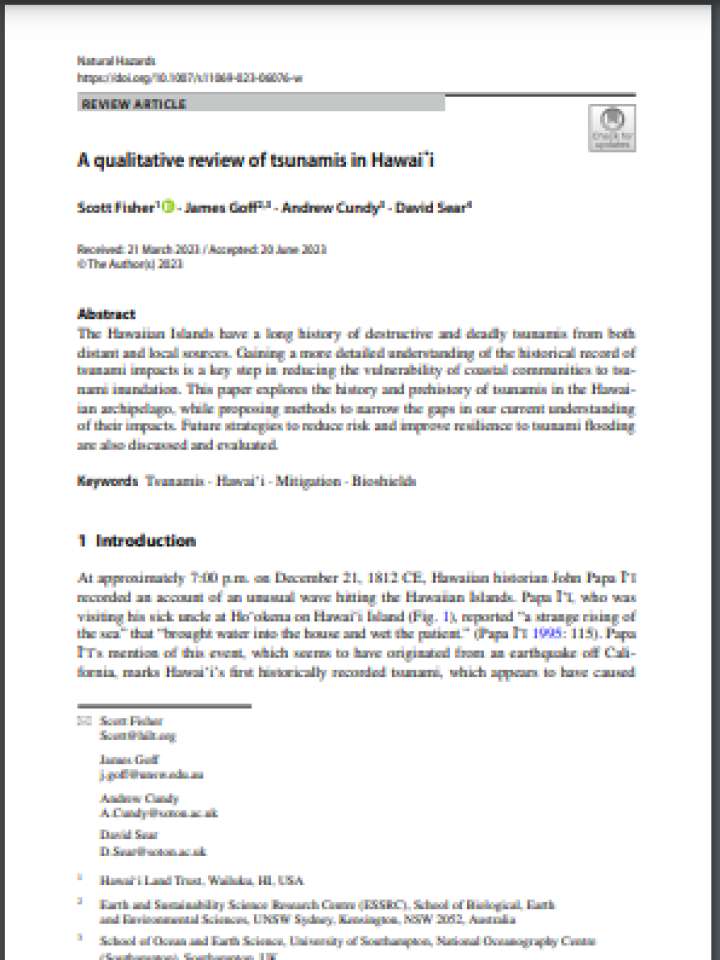A qualitative review of tsunamis in Hawaiʻi
This paper explores the history and prehistory of tsunamis in the Hawaiian archipelago, while proposing methods to narrow the gaps in our current understanding of their impacts. The Hawaiian Islands have a long history of destructive and deadly tsunamis from both distant and local sources. Gaining a more detailed understanding of the historical record of tsunami impacts is a key step in reducing the vulnerability of coastal communities to tsunami inundation.
In summary, the twentieth century witnessed a dramatic increase in the number of tsunami-related fatalities, from 68 known tsunami deaths in the nineteenth century to 222 in the twentieth century.
Reducing the gaps in the understanding of tsunamis in the Hawaiian archipelago ought to include two approaches.
- First, historical analysis (including ethnographic research) can provide insights into tsunami frequency, source locations and impacts on coastal communities.
- Second, sedimentary analysis of past tsunami deposits can improve awareness of wave velocities, wave heights, and inundation distances, each of which contribute to a clearer understanding of tsunami intensity and destructive potential.
Explore further

